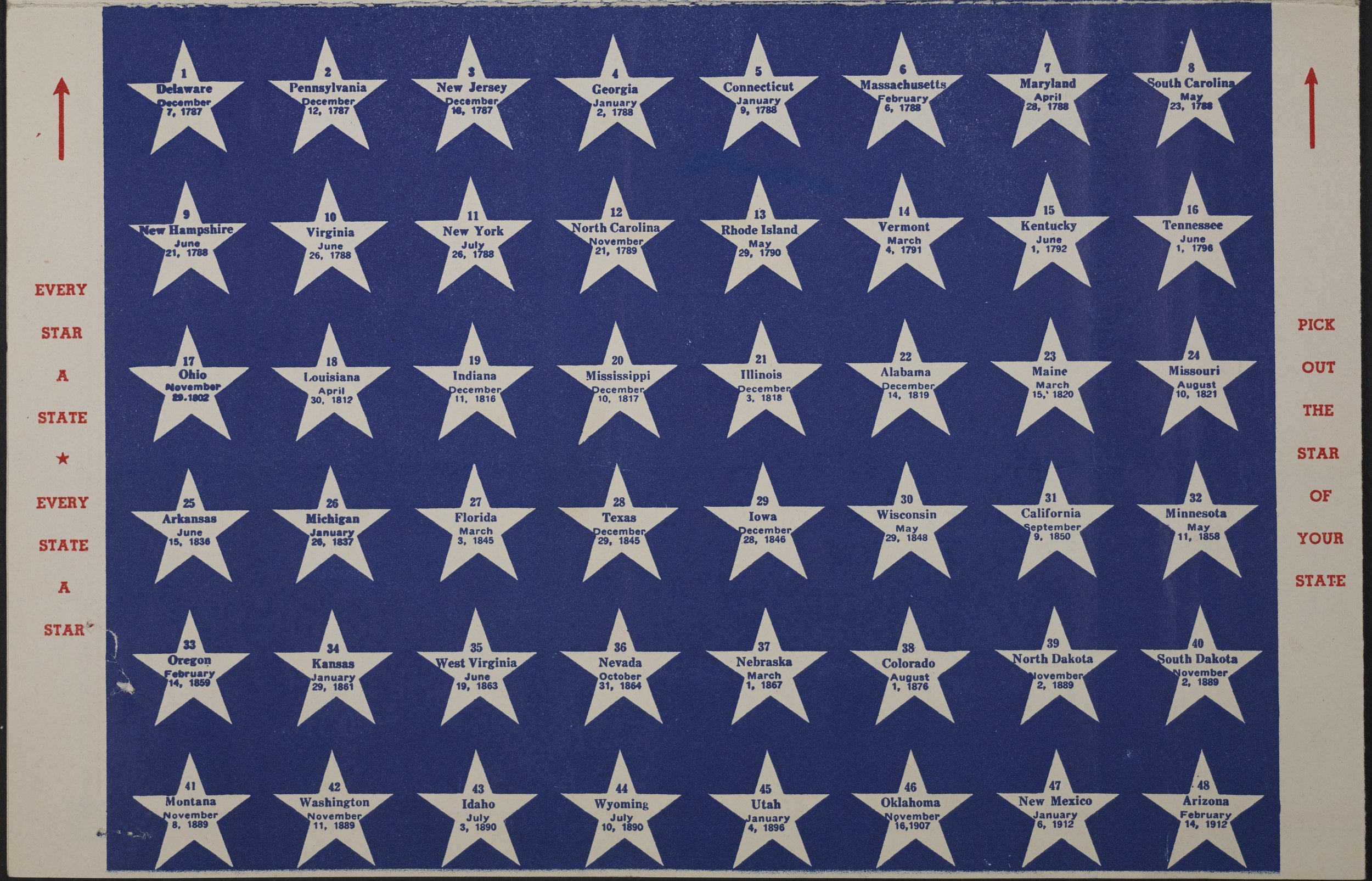June 14th is recognized as Flag Day in the United States of America. Various states, including New York, set aside a day for honoring the flag beginning in the mid-1860s. On a national level, Woodrow Wilson issued a proclamation naming June 14, 1915 “Flag day.” He called for a day of “renewal and reminder … of the ideals and principles” of the founding of the country. Even though the proclamation urged that Flag Day be observed annually, it was not until 1949 that Congress established a national day to honor the flag, without making it a holiday.
June 14th is the anniversary of the date in 1777 on which the Continental Congress adopted a resolution establishing an official “flag of the thirteen United States shall be thirteen stripes, alternate red and white; that the Union be thirteen stars, white on a blue field, representing a new constellation.”
The flag has been a symbol used to create both unity and discord over the years.
Consider an article in the Hearst-owned New York American from November 29, 1935 on the display of Soviet flags at a mass meeting in Madison Square Garden: “Twenty-five red banners were unfurled from the platform at that meeting. But not one of this country’s national emblems was on display!” The article reported on the anger this generated among elected officials and civic leaders, leading to demands that the Soviet flag be banned and that all meetings should display the American flag. The president of the Daughters of the American Revolution said, “I know of no other country in the world in which such a thing would be permitted. I consider it a disgrace not to have the national emblem displayed at public meetings.”
Lester Stone, the intrepid Secretary to the Mayor alerted LaGuardia of the events and the newspaper’s interest in a comment on the allegations of “an insult to the American flag at a mass meeting of Communists and Socialists, at which 25 red banners were unfurled without one American flag being displayed.” Unusually, Mayor Fiorello LaGuardia did not offer a comment.
Members of the Board of Aldermen showed no such restraint. Within the week, a proposed law was introduced and by week two, on December 10th, the Board unanimously passed the legislation that would require the display of American flags at public meetings. The bill required that at all public assemblies of 15 or more people where political or public questions were to be discussed, whether on the public streets or at any type of public location, “the American flag, of dimensions not less than 36 inches by 48 inches, shall be conspicuously displayed at all times …” The bill exempted private assemblies that were not open to the public and established fines of $100 and up to 10 days imprisonment.
This touched off a firestorm of letters, telegrams and postcards sent to Mayor LaGuardia. The Mayor’s office dutifully responded to each one, acknowledging receipt.
Organizations such as the dozens of branches of the American League Against War and Fascism, the West Bronx Workers Club, the Italian Progressive Club, the Retail Drygoods Clerks, the Teachers Union of the City of New York, and the National Council of Student Christian Associations opposed the bill. Many referenced newspaper publisher Randolph Hearst whose papers were crusading in support of the ordinance. The telegram from the Newspaper Guild of New York explicitly stated that it “regards the proposed American flag ordinance as a vicious proposal, sponsored not because of patriotic motives but as part of a widespread effort of reactionary newspaper interests. It is aimed at inflaming the minds of uninformed and unthinking persons against all labor, liberal and progressive ideas.” A postcard from a loyal American shared similar sentiments: “Hearst does not own NYC.”
There were supportive statements among the hundreds of communiques to the Mayor about this proposed local law, including those from The New York Society of Descendants of the Signers of the Declaration of Independence, the Irish-American Independent Political Unit, various American Legion chapters, the Daughters of the American Revolution, and many individuals.
On December 31, 1935, the Mayor vetoed the proposal. In his veto message, he noted that he could have used a “pocket veto” --not take any action - which would have effectively killed the proposal. But he wanted to do more because of the great interest in the measure.
This has been attempted in a measure for meetings in public squares and streets. Surely no one will contend that the presence of the flag at such meetings, in instances held by disloyal people, have made them either loyal or patriotic.
In addition to that, the provisions of the Ordinance might well be employed to repress or limit free speech guaranteed by the Constitution. Free speech does not mean that, because of the right of the speaker to utter a thought, there is agreement or approval of the statement, but it does mean the right of every person to speak within the limits of existing law without interference.
Patriotism can no more be instilled into a disloyal person by the forced presence of our flag than can the love of God be put into an atheist’s heart by placing a Bible in his hand.
We must protect the flag and not permit the use of the flag except with dignity, love, and respect for it. The American flag must not be made an instrument of repression. It must be continued as a symbol of freedom.
“It’s a grand old flag, a high-flying flag …”




